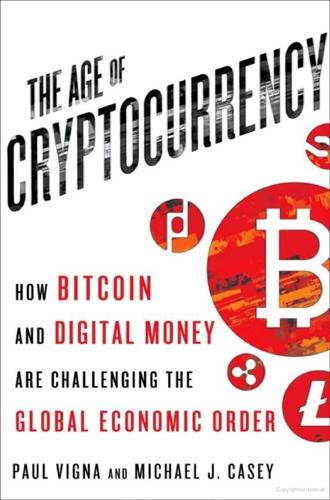
The Age of Cryptocurrency: How Bitcoin and Digital Money Are Challenging the Global Economic Order
by
Paul Vigna
and
Michael J. Casey
Published 27 Jan 2015
* * * If the Bay Area is the most important region from which bitcoin innovation is emanating, its ground zero may well lie inside a nondescript building in San Francisco’s funky, crowded, mini-melting-pot Mission District. The sparks that led to some of the most exciting developments in bitcoin first arose from conversations and brainstorming sessions inside this ramshackle “hacker house.” Sitting on the corner of Twentieth and Mission Streets, with its unassuming entrance behind an olive tree (the first missionaries brought the olive trees with them from Spain and they still dot the streets), the building now known as 20Mission was founded in February 2012 by Jered Kenna, the young bitcoin entrepreneur who’d previously founded Tradehill.
…
Then he invited techies, hackers, and bitcoiners to take up residence. It was almost an instant success. Through bitcoin meetups, it quickly grew into a hotbed of ideas and entrepreneurship. “There is a sense you’re part of a movement,” said Taariq Lewis at a Sunday meetup at 20Mission, “and part of something special.” Lewis is a bitcoiner who now runs the hacker house’s regular meetups. He came out to San Francisco from New York’s Spanish Harlem, by way of Boston, another compulsive, restless entrepreneur. He’d got his MBA at MIT, but wanted to create things, to make his own businesses, so he headed out West. Lewis was initially a bitcoin skeptic, viewing it as little more than a tool for the drug trade.
…
Now, he was broke, so broke that he couldn’t afford rent. He figured the only way he could find shelter was to turn some place into a communal living space. If he could organize it, he figured, he could finagle the rent. Kenna had always been intrigued by the idea of what’s popularly called a hacker house, with people working together and pooling resources, “but until I got to San Francisco, I didn’t realize you could actually do it.” He soon found a warehouse in the SoMa district and moved in with ten friends, but after only six months they were kicked out because the building wasn’t zoned residential.

Live Work Work Work Die: A Journey Into the Savage Heart of Silicon Valley
by
Corey Pein
Published 23 Apr 2018
But the tech boom let such so-called family homes reach their full potential as investment properties. Unproductive residential zones now teemed with digital workhouses bursting with entrepreneurial brio and filled to capacity, or beyond, with techie forty-niners. Unlike a youth hostel or a skid row hotel, the hacker houses often required a minimum stay of one month or more. Some hacker houses were attached to startup investment incubators or shared workspaces. Others amounted to little more than flimsy bunks in a windowless room. A number of trend-savvy real estate investors purchased or leased dozens of residential properties around the Bay Area to rent out in this fashion.
…
Unfortunately, subsequent discussions made clear that I had been haggling over the price of Magdalena for one night, not the price of her spare room for one month. * * * Lacking the financial stability required to secure a lease, much less a mortgage, my best hope upon leaving Hacker Condo was to find another “hacker house.” These were the products of disruptive innovation in urban real estate. The city was once riddled with small apartments and single-family homes that sheltered trifling handfuls of obsolete laborers and their unproductive children, often for decades at a stretch. But the tech boom let such so-called family homes reach their full potential as investment properties.
…
I composed a flattering self-introduction and announced my interest in joining the 20Mission community. Soon enough the manager, Steven Lombardi, replied with an invitation to “come by and chat.” It felt like a job interview. I wrote back and set up a time. In the meantime, I read up on the history of the city’s best hacker house. The neighbors, it seemed, were not thrilled with the arrival of such illustrious innovators. On the night before Halloween—which happened to coincide with a World Series victory by the San Francisco Giants—riots had broken out around the city. In the Mission, windows were smashed and fires set inside an under-construction luxury condo.

App Kid: How a Child of Immigrants Grabbed a Piece of the American Dream
by
Michael Sayman
Published 20 Sep 2021
* * * — I couldn’t get out the door fast enough after my first night in the hacker house. It had been an agonizing seven hours of tossing and turning in my airless closet, the beat of the nightclubs throbbing through my dreams. For the first time ever, I jumped (okay, make that climbed) out of bed the minute I stirred semi-awake in the morning instead of going back to sleep three or four times. I quickly dressed, used the bathroom—careful not to touch anything; I’d wait to shower at the Facebook gym—and ran out the door without a word to the random people I apparently lived with now. This would be my routine for the rest of my time in the hacker house, which I already knew wouldn’t last long.
…
My dad’s third attempt at a real estate career still hadn’t taken off, and my mom was exploring the idea of starting a jewelry business. As my Facebook start date grew close and my apartment problem hadn’t magically solved itself, I wrote a quick “looking for a room for rent” post on Facebook. Hours later, a guy I knew a little from the Internet but had never met in person messaged me that a room had opened up in his “hacker house” in San Francisco. Wow, that was easy, I thought. “I’m interested!” I typed back. “Details?” The gist was that everyone in the house (he didn’t say how many there were, and I somehow didn’t think to ask) was in their early twenties. They were what you’d call Silicon Valley hackers—lone wolves who hate the idea of working full-time and code independently, making occasional money from selling their apps.
…
They were what you’d call Silicon Valley hackers—lone wolves who hate the idea of working full-time and code independently, making occasional money from selling their apps. The rent was $1,350, which I thought sounded very steep, but I was getting anxious to nail down my living situation, so a week before heading back to California, I confirmed with the guy that I would like to move into the hacker house. One week later, I flew back to San Francisco and Ubered straight from the airport to my new home in the city at around ten p.m. It was in the center of the Castro District, a two-hour commute in rush-hour traffic to Facebook in Menlo Park. Most young Silicon Valley workers lived in the city and took the free Facebook and Google shuttles to and from work every day.
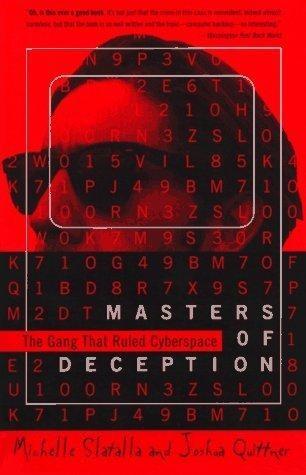
Masters of Deception: The Gang That Ruled Cyberspace
by
Michelle Slatalla
and
Joshua Quittner
Published 15 Jan 1995
An organized gang of hackers did it. It was just the event to catapult the MOD case to the top of the pile in the Secret Service's telecommunications division. Secret Service agents started having frequent conversations with prosecutors in the U. S. Attorney's office. They made plans to execute search warrants at the hackers' houses. The Learning Link crash was, in fact, the event that four years later would cause a prosecutor to smile wryly, as he explained, "This made the case sexy. " Even though Eli's missive to the media never got delivered, the general message was getting through. Hackers are out there, people, and we'd better figure out who they are and what they're doing.
…
"Did we make the right call in which hackers to follow, or is there someone out there who's more important, and we aren't following them?" But they could indulge in only so much self-flagellation. It hadn't been their idea to drag out this case for so many long months. After all, they've already turned over enough information from the DNRs to enable the prosecutors to apply for search warrants at the hackers' houses. They even passed along the tip about The Learning Link to the Secret Service. It was up to the government now to get the search warrants. The Secret Service and the U. S. Attorney's office kept telling Kaiser that it was in the works. Any day now, they'd say. At Secret Service headquarters downtown, a certain special agent named Rick Harris was torturing himself with the same questions that were hounding Kaiser and Staples.
…
No matter the season, they wear beat-up fatigue coats, baggy jeans, clunky-soled shoes, thick-thick black belts with square metal buckles that weigh five pounds. They sport peach fuzz moustaches and slicked-back buzz cuts. You can't miss them. The gathering is their "meeting, " and it's organized by the semi-official hacker house organ, a quarterly magazine called 2600 that's published out of Long Island. The magazine's name is an allusion to history: back in the Dark Ages of the 1960s, a 2600 hertz tone was used to control all the phone company's trunk lines. Today, the tone is obsolete, but the magazine still pays homage to the days when a street-smart hacker named Captain Crunch figured out that blowing a freebie whistle from a cereal box produced the precise tone necessary to make free phone calls.

Abolish Silicon Valley: How to Liberate Technology From Capitalism
by
Wendy Liu
Published 22 Mar 2020
We still didn’t have a functioning product, and our only contracts were of the noncommittal sort; all we had in our bank account was a few paltry thousand that we had won in a university-wide entrepreneurship competition. In this uncertain atmosphere, the tiniest thing could tip us over into the trough. One day I came across a WIRED profile of some startup founders living in a hacker house in San Francisco.5 They were young, smart, hardworking; they cycled between optimistic highs and cynical lows; their startup didn’t make it. The piece detailed the founders’ gradual lowering of their aims, from their initial sky-high ambition to build something world-changing into finding themselves creating a banal e-commerce plugin based on the advice of their investors.
…
Talking to each other helped dissolve the stress; our path might be hard, but hey, at least we weren’t working for that guy. In the evening, we headed for a party in Bernal Heights. The person who invited us was a young founder whom Nick had recently connected with on LinkedIn, and we didn’t know what to expect. It turned out to be a hacker house inhabited by about a dozen people in the startup scene, all founders or soon-to-be founders waiting for the right bolt of inspiration to strike. One of the inhabitants was a Thiel fellow — meaning that PayPal co-founder and controversial billionaire Peter Thiel paid him $100,000 to put off university — and he gave Nick tips on his own Thiel application.
…
Pitch over, I called us a Lyft and nudged Nick toward the door, citing early morning meetings. As Nick snored in the front seat, Liam quietly declared that he didn’t want to move to San Francisco if these were the kind of people we would be hanging out with. I shared his unease, but I wasn’t quite ready to agree. Maybe hacker houses just attracted the worst bits of San Francisco? I still wanted to move here, I told him; after all, what other place would be as appropriate for the path we’d chosen? The midnight drive through the foggy hills was unexpectedly peaceful. Our Lyft driver silently steered us through the city, occasionally glancing at his phone for directions.

How to American: An Immigrant's Guide to Disappointing Your Parents
by
Jimmy O. Yang
Published 13 Mar 2018
But even though we had three dudes crammed in a one-bedroom apartment, living with two of my best comedian friends was a major upgrade to living with Nathaniel the check thief. In our minds, we made it. CHAPTER EIGHT HOW TO SILICON VALLEY [JIN YANG] (20s) PLEASE SUBMIT TALENT WHO ARE NATIVE BORN ASIAN THAT SPEAK ENGLISH. TALENT MUST HAVE GREEN CARD OR BE US CITIZEN WITH PROPER PAPERS. A resident at Erlich’s incubator, Hacker House, Jin Yang is a tall, skinny ASIAN Tech geek who speaks in a THICK ACCENT with every other word being either s**t, f**ck, mother**ker or dude. Role slated to start shooting approx. 3/2–3/5. POSSIBLE RECURRING GUEST STAR I got an audition email with this very interesting character description.
…
I am nervous I’ll botch the lines, I am nervous I haven’t done enough homework on the character and I am nervous people will discover I am an economics major trying to fake his way into being an actor. But something felt very natural about being Jian Yang. It was as if I’d been playing him for years. I felt like I was playing an earlier version of myself. For my very first take on Silicon Valley, I sleepily shuffled down the hallway to answer the door at the Hacker House. I opened the door to an angry man who was looking for my roommates, Thomas, Zach and Kumail, who were hiding from him around the corner. “Do you know where Pied Piper is?” the angry man asked. “This is Pied Piper,” I, Jian Yang, replied, matter-of-factly. “This is Pied Piper?” “Yes, this, here.

When the Heavens Went on Sale: The Misfits and Geniuses Racing to Put Space Within Reach
by
Ashlee Vance
Published 8 May 2023
The concept of a communal house was certainly not new, nor was the idea of communal living at all novel for the Bay Area. It would, however, turn out that the Rainbow Mansion revived the idea for the engineers and software developers flocking to Silicon Valley. In large part thanks to Jessy Kate, so-called hacker houses were about to become a thing. Some people were simply trying to deal with the Bay Area’s ever-rising rents. Some wanted more of a sense of community. Others used the houses more as networking tools for their start-ups. By 2013, enough of those types of houses would appear to warrant a trend piece in the New York Times with the title “Bay Area Millennials Are Flocking to Communes—No Tie-Dye Required” in which the Rainbow Mansion and Jessy Kate made a prominent appearance.
…
See Schingler, Jessy Kate (née Cowan-Sharp) Crawford, James, 122 Cube of Learning (Beck; sculpture), 149 CubeSat, 92, 93–94 Cupid, 438 Cyclone-4 rocket, 445 Dangerous Sports Club, 54 DARPA (Defense Advanced Research Projects Agency), 37–39, 116, 195–196, 199, 202, 285, 369–370, 374–375 deep-space exploration, 490 Defense Advanced Research Projects Agency (DARPA), 37–39, 116, 195–196, 199, 202, 285, 369–370, 374–375 Dell, Michael, 410n Delphin engine, 370 Delta Clipper, 47 differential drag, 32, 109 DirectTV, 443n DISCOVERER, 116 diversity, lack of, 287, 288 D’Mello, Shaun, 215, 219, 231 Dnipropetrovsk (Dnipro), 438–443, 444, 447–448, 450 Dotcom, Kim, 138 Doves (satellites), 27, 31–32, 96, 103–106, 109–110, 227, 396 Dragon capsule, 327 EchoStar, 443n Edwards Air Force Base, 173, 412 Electron rocket concept for, 139, 209 construction of, 140–141 first launch and, 226–227 flight frequency of, 16 kick stage for, 230–231 launch challenges and, 214–218, 220–221 Markusic and, 424 Planet Labs and, 107 reusability and, 490 schedule and, 224 second launch and, 227–228 size comparison of, 395 success of, 337–338, 365, 369 third launch of, 238–241 work on, 209–213 Elizabeth II, Queen, 84 Energia rocket, 437 English, Christa, 410, 411, 417, 419, 424, 465 EOS Data Analytics, 433 Escapia, 59, 273 European Space Agency, 83 Eveleth, Decker, 112–115, 119 expected casualty analysis, 345 Expedia, 273 FAA, 330–331, 332, 336, 343, 345 Falcon 1, 2–13, 16, 20, 38, 40, 56, 188, 208, 397, 415, 419, 426 Falcon 9, 12, 141, 395, 428, 490 Farrant, Ben, 289–290, 370, 391 Fay, Michael, 190–192, 193, 203, 216–217 Federal Communications Commission, 131 Ferraro, Matthew, 101 Firefly Aerospace Astra and, 493 delays and, 466–467 first launch and, 479 founding of, 404–405 funding and, 455, 464–465, 470–471, 475 goals of, 402, 403–404 increase rocket size and, 455 launch license denial and, 472, 485 Polyakov and, 434–436, 457–458 Polyakov’s ouster and, 484–486 setbacks for, 458–459 SpaceX and, 403 success of, 486 in Ukraine, 448–450 value of, 476 Firefly Farm, 466 Firefly Space Systems advantages for, 208 bankruptcy of, 429, 433–434 founding of, 423–427 funding and, 428–430 goals of, 207, 427 launch vehicles of, 395 Martin and, 356 Polyakov and, 433–434 Rocket Lab and, 214, 230 US government agreement and, 456 Vandenberg Air Force Base and, 460–464 Fisher & Paykel, 154–157, 159, 161, 163, 165 Five Eyes intelligence-sharing group, 222 Flanagan, Matthew, 339, 356–362, 391 Fleet Space Technologies, 238–239 Fleming, Shane, 218 flight termination systems, 225, 227, 286, 344–345 Flirt, 438 4D, 274–275, 489 FuckedCompany.com, 274 Gamma, 426 Garcia, Ian, 290, 329 Garver, Lori, 67 Gates, Bill, 387, 388 Gemini mission, 42 Gentile, Bryson, 311–314, 317, 379 geolocation data, 125–126 Gies, Bill, 287–288, 338–340, 391 Gillies, Daniel, 234n Gillmore, Chester, 108 Goddard, Robert, 145 Google Ames Research Center and, 58, 61, 64–65 Google Earth, 120 Google Maps, 120 Google Mars, 64, 276 Google Moon, 64–65, 276 PhoneSat project and, 93 Skybox Imaging and, 111n Gorbachev, Mikhail, 47n GPS chips, 303 Grassley, Chuck, 68 Great Mercury Island, 190–191, 202–203 Griffin, Michael, 43, 54, 59 Guiana Space Center, 397 hacker houses, 73 Halley’s Comet, 153–154 Hawking, Stephen, 86 HitDynamics, 438 Hofmann, Chris, 338–339, 346, 350, 379, 382, 391 Holicity, 387 HomeAway, 273 Hopkins, Anthony, 148 Houghton, Samuel, 199–201 Howard, Ben, 101, 103, 106, 488 Hubble Space Telescope, 43 Humanity Star, 227–228 Hundley, Lucas, 281–282 Hydra, 447 hydrogen peroxide, 159–161 Hyperloop, 356 ICBM factory in Dnipro, 440, 444 image analysts, 118–119 imaging satellites, 98–99 India Pakistan and, 123–124 space program in, 27–28 Indian Space Research Organisation (ISRO), 27, 29–30 Industrial Research Limited (IRL), 169–171, 179, 181, 184 Industrial Revolution, 145 Ingels, Bjarke, 312 Instant Eyes project, 195–196, 199–201 International Astronautical Congress, 49, 86 International Space Station (ISS), 13, 105, 107, 436 International Space University, 66, 86–87 International Talk like a Pirate Day, 79 International Traffic in Arms Regulations (ITAR), 66, 233–234 internet service, satellites and, 14, 18, 128–130, 487–488 Intimidator 5, 91 ion thrusters, 450 Iridium, 129, 388 Israel Defense Forces, 119 ITAR (International Traffic in Arms Regulations), 66 jade, 149 James, Deborah Lee, 475 James Webb Space Telescope, 327 Jazayeri, Mike, 365n Jet Propulsion Laboratory (JPL), 43, 85, 174–175 Jobs, Steve, 63 Jornales, Rose, 286–287, 391 Joyce, Steven, 221, 223 Judson, Mike, 290–291, 307, 317, 318, 324 Jurvetson, Steve, 91, 102, 104n, 105, 488 Keeter, Milton, 330–331, 332, 338–340, 343–346, 391 Kelly, Isaac, 326, 338–342, 391 Kemp, Chris Ames Research Center and, 59–61, 276 Astra going public and, 385, 387–388, 390–391 Beck and, 365–366 Brockert and, 292 budget issues and, 326 Burning Man and, 253–254 company name and, 294–295 “Dawn of Space” party and, 295–296 engine tests and, 282–283, 307 financial issues and, 370–372, 374, 378, 381–382 funding and, 296–297, 365, 366, 383 goals of, 309–310, 384 Google and, 64–65 on himself, 267–277 Jessy Kate and, 324–325 Judson and, 291n launch attempts and, 316, 361, 376, 380, 382–383, 393 launch delays and, 334 launch failures and, 336, 337, 347, 349, 350–354, 364 launch locations and, 280, 304 launch preparations and, 331–333 life advice from, 308 living arrangements of, 102n loss of driver’s license and, 297–299 Lyon and, 390 Marshall and, 85 Martin and, 356, 357–358 media attention and, 317 moving rocket and, 305, 306 Open Lunar Foundation and, 488 OpenStack and, 250–253 Polyakov and, 468–469 Rainbow Mansion and, 72–73 recent work of, 489, 492–493 Rocket Lab and, 338 security and, 301 simplicity of design and, 279 Skyhawk space and, 310–314, 367–369 status meetings and, 281 Stealth Space Company and, 260–263, 265 Thompson and, 348–349 transparency of, 394 Ventions LLC and, 250, 257–258 Whitesides and, 423 Kennedy, Fred, 13, 37–38 Kennedy Space Center, 174 Kessler syndrome, 131 Key, John, 220, 221, 222, 223 Khosla Ventures, 206–207, 209, 214 Khrushchev, Nikita, 440 King, P.
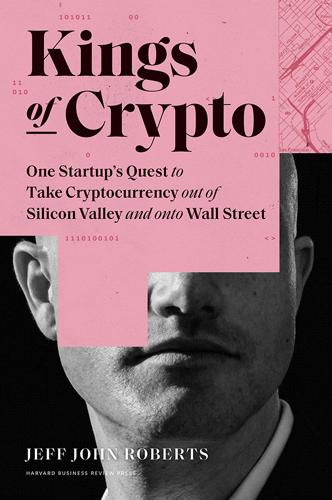
Kings of Crypto: One Startup's Quest to Take Cryptocurrency Out of Silicon Valley and Onto Wall Street
by
Jeff John Roberts
Published 15 Dec 2020
After Olaf came Craig Hammell, a talented engineer who had helped build the dating site OK Cupid—perhaps a fitting career choice for someone so painfully shy with women that he didn’t have a girlfriend until his senior year of college. Brian and Fred had met Craig on a trip to New York and, discovering he was a bitcoin believer, invited him to San Francisco for a work trial. Upon arriving, Craig moved into “Hacker House,” a place that billed itself as a home for the city’s tech elite, but for Craig was more of a hustle than a hot spot. “I realized it was a way to rip off people by getting them to pay $1,500 a month to live with nine other guys in a crummy apartment,” Craig recalls. Soon after, the building’s owner discovered what was going on and evicted everyone, including Craig.
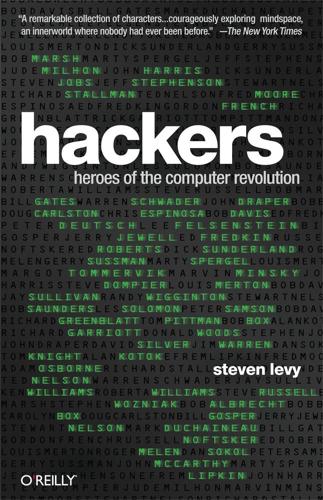
Hackers: Heroes of the Computer Revolution - 25th Anniversary Edition
by
Steven Levy
Published 18 May 2010
“Oh, I don’t know,” said Nelson. “I just decided it would be a good thing to do.” Fifteen years later, Nelson was still in Bachelor Mode. While women might not have been much of a presence in his life, Nelson did have the companionship of fellow hackers. He moved into a house with Gosper and two others. Although this “Hacker House” was in nearby Belmont, then shifted to Brighton, Nelson resisted buying a car. He couldn’t stand driving. “It takes too much processing to deal with the road,” he would later explain. He would take public transportation, or get a ride from another hacker, or even take a cab. Once he got to Tech Square, he was good for hours: Nelson was among those hackers who had settled on the twenty-eight-hour-day, six-day-week routine.
…
The house went on and on, rambling down the hill for a hundred and forty feet; the frame finally filling out, with stairs you could climb and doorways to peep through. Right now the house was open to the elements, for wind to blow through and rain to fall through, and no doors or walls prevented free movement. A perfect, endless hacker house. But the builders would soon put walls to keep the world from peering in the house, and doors to keep the people in the house from bursting in and violating a person’s privacy. No one in his right mind would want it any different. The same with hackerism, perhaps . . . no one running a business could want it really run by the Hacker Ethic.

Democratizing innovation
by
Eric von Hippel
Published 1 Apr 2005
This network eventually grew to link hundreds of universities, defense contractors, and research laboratories. Later succeeded by the Internet, it also allowed hackers to exchange software code and other information widely, easily, and cheaply—and also enabled them to spread hacker norms of behavior. The communal hacker culture was very strongly present among a group of programmers—software hackers—housed at MIT’s Artificial Intelligence Laboratory in the 1960s and the 1970s (Levy 1984). In the 1980s this group received a major jolt when MIT licensed some of the code created by its hacker employees to a commercial firm. This firm, in accordance with normal commercial practice, then promptly restricted access to the “source code”3 of that software, and so prevented non-company personnel—including the MIT hackers who had been instrumental in developing it—from continuing to use it as a platform for further learning and development.
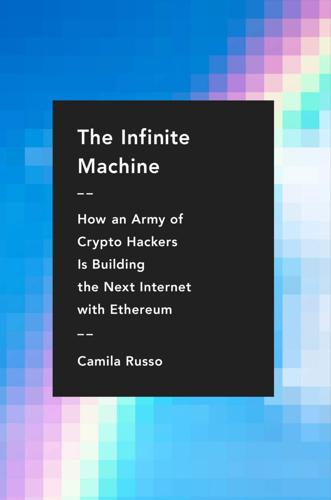
The Infinite Machine: How an Army of Crypto-Hackers Is Building the Next Internet With Ethereum
by
Camila Russo
Published 13 Jul 2020
Today Stripe is valued at over $20 billion and has more than 1,500 employees, but back then, in 2012, it was a two-year-old company with a thirty-person team. Richard got the job and knew he had boarded a rocket ship, but he had trouble following directions and was fired after three months. He was depressed for a few weeks but bounced back and started a recruiting company with a friend he met in the dingy hacker house they shared with fifteen other men in San Francisco. Again, that was short-lived, and his friend pushed him out of the company. He was so angry he got into running just to blow off the negativity that was eating him up. On one of those runs, he heard Vitalik. Not like a divine voice coming down from the sky, but on a podcast.
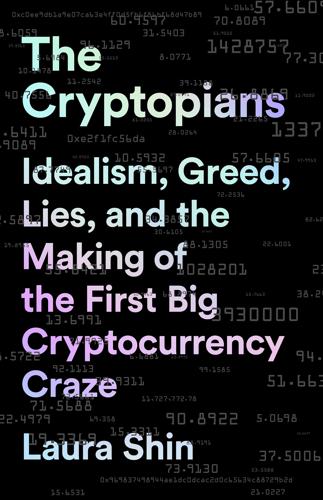
The Cryptopians: Idealism, Greed, Lies, and the Making of the First Big Cryptocurrency Craze
by
Laura Shin
Published 22 Feb 2022
A multisig wallet, like the Ethereum Foundation footballs, required multiple signers to make a transaction, so in order for it to have been hacked, several people had either been in cahoots to steal from it or had their devices hacked simultaneously. In Barcelona, Griff, Jordi, and the team of Griff’s new venture were drinking wine on a hacker house porch with a view of La Sagrada Familia when Griff got a WhatsApp call from Swarm City’s King Flurkel about the hack. Griff assumed Flurkel was wrong. But when he checked it out, he saw a transaction had moved a lot of money with a single signature, not three out of five. Seeing Swarm City’s wallet had been coded by Parity, Griff, Jordi, and the other White Hats there realized this meant it was possible to hack any Parity-brand multisig wallet.
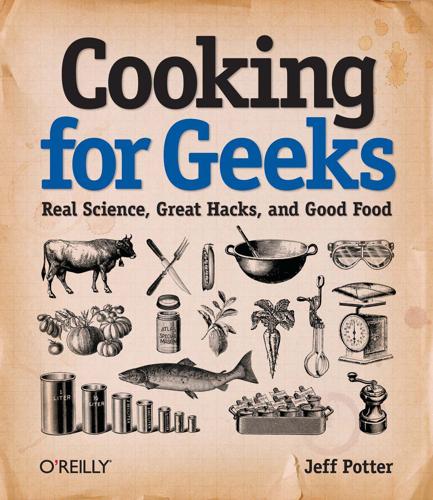
Cooking for Geeks
by
Jeff Potter
Published 2 Aug 2010
Pasteurized Eggs While salmonella is quite rare in uncooked eggs, with estimates being somewhere around 1 in 10,000 to 20,000 eggs carrying the bacteria, it does occur in the laying hen populations of North America. If you’re cracking a few dozen eggs into a bowl for an omelet brunch at your local hacker house every week, let’s just say that odds are you’ll eventually crack a bad egg. Luckily, this isn’t a problem if those eggs are properly cooked and cross-contamination is avoided. The real risk for salmonella in eggs is in dishes that use undercooked eggs that are then served to at-risk populations (e.g., infants, pregnant women, elderly or immunocompromised people).

Cadillac Desert
by
Marc Reisner
Published 1 Jan 1986
In a lectern-thumping floor speech, Jim Wright said that Carter was carrying his environmental ideas so far he threatened to become “a laughingstock.” Then, to show that he, too, was an environmentalist, Wright help up a glass of water to extol its goodness. Public Works Committee chairman Ray Roberts said Carter was a captive of “environmental extremists and budget hackers.” House Speaker Tip O’Neill took the highly unusual (and, for Carter, embarrassing) step of arranging a meeting with the New York Times to complain that Carter was “not listening” to Congress. Senators Gary Hart and Floyd Haskell of Colorado began to pepper the administration with Freedom of Information Act requests, ostensibly to learn how their projects were selected.